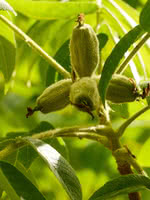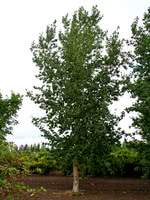Mon-Fri 9am - 5pm Mountain time
Okanese Poplar vs Butternut (White Walnut)
Juglans cinerea
Populus x Okanese
Butternut is one of the few walnut varieties native to Canada. The nuts are sought after for their mild, sweet, and oily taste. Ensure this tree is planted in full sun and well-drained soil for best results.
Butternut is self-fertile but it has better yields when planted near other butternuts. It can survive in zone 2, but reliably produces nuts in zone 3.
A top CO2 absorbing species. Experts think this tree may help climate change more than others.
Okanese Poplar is an excellent shelterbelt tree. It's one of the hardiest and fastest growing trees you can plant on the prairies. This hybrid poplar is disease resistant, drought and cold tolerant, produces no fuzz, and requires little maintenance. Okanese poplar also makes for a good privacy screen on larger properties.
Butternut (White Walnut) Quick Facts
Okanese Poplar Quick Facts
In row spacing: 2.4 - 3 m (8 - 10 ft)

